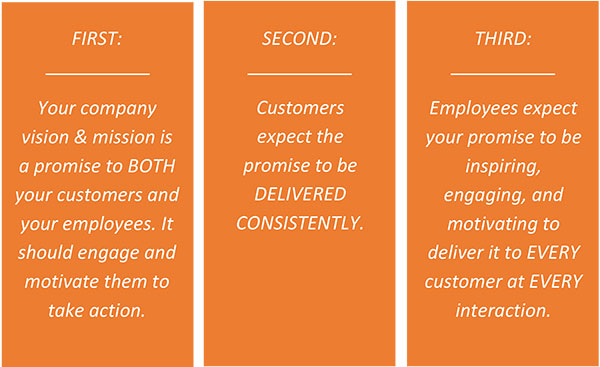Quiet quitting has been making headlines for the past few weeks, it’s the latest buzz word for a problem that companies have always faced – lack of employee engagement. Gallup recently reported an uptick in employee disengagement, with 50% being Disengaged and 18% Actively Disengaged. It is not surprising that there is an uptick. However, what is surprising is that the number is not higher than reported. There have always been, and there always will be, employees who do the bare minimum on the job.
The fact is too many leaders continue to turn a blind eye to a simple concept that is foundational to their culture, their employee experience, and their customer experience:


Gallup recently stated that “The overall decline was especially related to clarity of expectations, opportunities to learn and grow, feeling cared about, and a connection to the organization’s mission or purpose — signaling a growing disconnect between employees and their employers.” Having conducted employee engagement surveys across numerous industries, these are not new reasons for employee disengagement, but in today’s world the solutions to address them have changed.
Most organizations were not equipped at the start of the pandemic for the vast changes to the workforce and environment – employees working remotely, the technology requirements, communication, etc. The technology adaptation required was the lowest hurdle to overcome, the tallest were people management and culture.
That raises an interesting question: Are today’s engagement scores the outcome of the workplace and employee emotional changes driven by the pandemic?
There is ongoing debate on the impact pandemic WFH policies and even now the return to the office policies have had on employee engagement. Remote work programs have advantages and disadvantages; one notable downside is that they often impede organizations from creating and maintaining their company culture. Company culture is fostered, in large part, by informal and formal socialization – employees coming together and engaging in team-building activities, division- or company-wide meetings. One of the best ways companies can increase engagement is to reinforce the impact that not only the company has but the impact each employee has on customers’ lives, as well as company vision and mission.
Organization culture also plays a significant role on employee engagement. According to a study published in the California Management Review, How Have Organizational Cultures Shifted During the COVID-19 Pandemic, we see that organizations tended to shift from a high-performance focus to one that valued empathy, understanding, and mutual support. Specifically, organizations shifted their focus on several key cultural attributes:


During the pandemic, regular leadership communication was associated with positive employee experiences. Even with increased focus on flexibility, it did not emerge as an attribute to drive positive employee experiences; the authors hypothesized that perhaps “its advantages (e.g., no commute) were matched by certain negatives (e.g., crowded quarters at home)”. Most negative experiences were associated with accessing resources, the way employees were communicating and collaborating, and culture change. The authors believed that the focus shift in key cultural attributes was unsettling for many and most likely damaging for organizational culture.

Culture change does not happen through leadership mandate, starting with new mission statements or making changes to company structure; it’s critical to start with actions, because culture change only happens when employees are motivated to take action. Show employees the change you want to see by:
Engaging cross-functional teams to innovate and frame issues in a manner that stirs emotion and action.
Finding quick wins to build and gain supporters.
Communicating quick wins.
Continuing to engage broader cross-functional teams to innovate and keep momentum going.
Developing programs that teach and amplify the behaviors and attitudes that align to you culture, vision and mission.
Continuing to communicate, tell customer and employee stories that bring your culture to life.